Distance from gas equipment to electrical wiring: technical norms and rules
When arranging the gas supply for your home or apartment, you need to think through a huge number of things, in particular, the distance from the outlet to the gas pipe, regardless of when the electrical wiring was installed or reconstructed, before or after the development of the project.
The next crazy requirements, recommendations to complicate the process, or reasonable standards? What happens if you don’t follow the rules and put wires anywhere?
We will answer these and many other questions about the combination of electricity and gas supply in one room in detail.
The content of the article:
Location of electrical wiring and gas equipment
Kitchens in different apartments and houses differ in size. It could be a luxurious plantation for cooking, a place that fits everything you need, or a cramped closet where a stove with a refrigerator and a cupboard for cereals fit in - and good.
One way or another, in any kitchen there is electrical wiring that powers the hood, pumps, equipment for supplying and circulating water, as well as household appliances, such as a refrigerator or microwave.

And this is at a minimum, not counting electrically dependent heating boilers and gas stoves.
Thus, electrical wiring is almost always combined with a gas pipeline in the same room.
What does the law say?
Of course, the distance between the carriers of these two energy resources is not far-fetched, but carefully calculated by specialists and included in the relevant regulations.
This:
- PUE-6;
- PUE-7;
- SP 402.1325800.2018.
Let's start with the PUE (electrical installation rules). We are interested in the 6th and 7th edition. IN paragraph 2.1.56 PUE-6 It is stated that when crossing wires and cables with pipelines containing flammable gases, the distance between them must be at least 100 mm. At the same time, wires running in “hot” areas must be provided with additional thermal protection and protection from mechanical damage.
Features of parallel laying are described clause 2.1.57, in which the distance is normalized to 400 mm and, again, near hot pipes, wires and cables must be protected.
PUE-7 more categorical. Clause 7.1.50 standardizes a distance of 0.5 meters from any switches, sockets and other electrical installation elements.
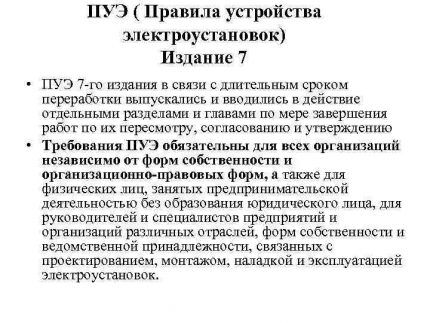
However, there are still mandatory rules for the design of gas consumption systems, introduced June 6, 2019 and defined as SP 402.1325800.2018.
Let's look at what this Code of Rules says about wiring and gas pipelines. IN clause 5.1 It is stated that any gas stove must be equipped with a “gas control” system, which helps prevent the supply of fuel to the nozzles if the flame goes out. And besides, between gas valve and installed with a hose dielectric insert.
The requirements for ensuring fire safety are very strict, eliminating the possibility of rapid spread of flame in the event of such a danger.
Clause 6.15 indicates the distance of the internal gas pipeline networks from the power supply - horizontally not less than 40 cm, vertically - not less than 10 cm.
Moreover, if gas-using appliances are connected to the electrical network, and as we have already said, they are common everywhere, separate rules apply, which we will now also consider.
First of all, the distance from the gas boiler to its electrical outlet - no more than 0.5 m.
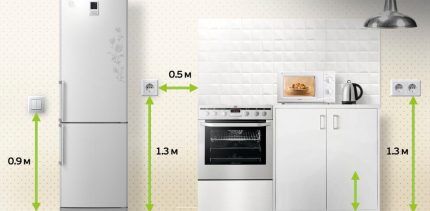
The socket to which equipment running on blue fuel is connected must be grounded and be easily accessible for quick disconnection or visual inspection.
Please note that there should be no mechanical impact on the electrical cable and during installation/operation no twisting, stretching or other actions that negatively affect the integrity of the wiring should be allowed.
It is strictly forbidden to place wiring in close proximity to any temperature influences. In particular, the distance from the gas stove to the outlet connected to it is no different from the boiler outlet - no more than 0.5 m with no points of contact.
Basically, it is these documents that regulate the distance of electrical wiring and electrical sources from the gas pipe in any case, both when connecting devices operating on this fuel, and to independent installations.
Why do you need to keep distances?
At first glance, gas and electric current are 2 different resources working together. And yet, they are absolutely incompatible in direct contact with each other. What is the reason for this?
When electrical wiring comes into contact with a hot environment, it undergoes thermal melting, which can result in a short circuit and, as a result, a fire.
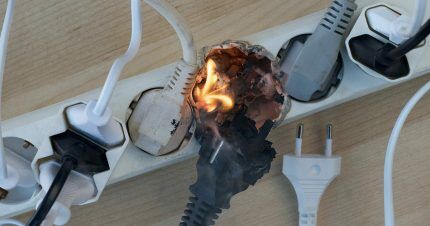
Even if an accident on a wire line occurs not due to the heating from gas-using equipment, in close proximity to it, in the event of a simultaneous gas leak, even a small spark can trigger an explosion. Not to mention the fire of electrical wiring and the impact of flame on gas pipes.
But that is not all. It is very important to provide high-quality electrical wiring located next to the gas distribution system. Often, especially in old houses, wires were laid according to the “zero-phase” system, that is, grounding was not provided.
The modern electrical wiring system involves switching to a three-wire system. Accordingly, in old distribution boards that are not designed for 3 cores, the “ground” is set to zero.
When connecting a large number of electrical devices, the zero may burn out, which leads to an increase in voltage and a fire. Imagine what will happen if the voltage drops on a gas stove connected to electricity.
In fact, a heating element effect may occur in the pipes leading to the riser, not to mention more serious consequences, for example, an explosion.The dielectric insert discussed in SP 402.1325800.2018 is necessary precisely in order to neutralize the conductivity gas hose.

Electrical wires exposed to gas pipes due to any reason are also dangerous. It will create a voltage on the pipeline, which will, in principle, be grounded, but in theory it is still dangerous to life and possible fire.
Liability for non-compliance
Of course, as in the case of any other violation of approved norms and rules, if the required distances from the gas pipe to the laid electrical cable are not observed, liability is provided for citizens.
Code of Administrative Offenses of the Russian Federation Article 9.4 promises to impose fines on violators. Well, and of course, for a dangerous connection, various regulatory documents practically ensure disconnection from the line if the faults are not eliminated.
By the way, monetary penalties are not that significant, even for repeated violations.
And, on the one hand, the contractor will still bear the punishment, and this, by all rights, is an organization that has access and licenses for laying gas and electrical networks. And they will not initially take risks if a responsible organization with operational experience is chosen.
But, as practice shows, most consumers use the services of private electricians without proper documentation and contracts, or do the wiring themselves.
And this is already Art. 7.19 Code of Administrative Offenses of the Russian Federation - unauthorized connection, for which you also face a fine.Well, and of course, in the event of unintentional harm to the health and damage to the property of other citizens as a result of illegal activities, the punishment will be even more severe - up to and including imprisonment.
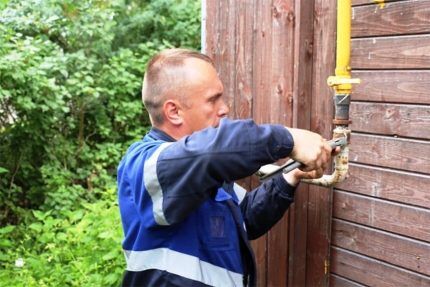
It is very difficult to clearly answer the question of what awaits you if the required distances are not observed. This is all at the discretion of higher authorities and officials.
How to avoid problems?
First of all, following the rules is your health and safety for your life.
Therefore, if you combine gas and electric, use a few simple recommendations:
- Follow the rules of the PUE and SP exactly.
- At the entrance to your apartment, install a protective shutdown device that guarantees a power outage in case of problems with the neutral wire.
- Before installing the wiring, make sure that the new one will match the wiring of the old circuit (if it does not change).
- A gas stove cannot be grounded through a gas pipeline, just like ordinary household items that run on electricity.
And in addition, be sure to use the services of experienced electricians and enter into contracts when installing electrics for gas appliances.
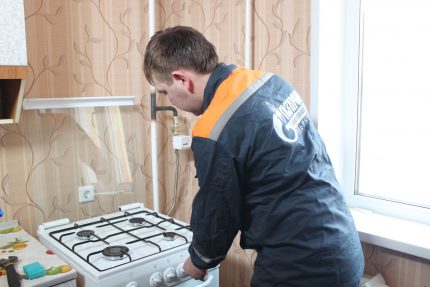
All these recommendations will help you avoid problems with regulatory authorities and ensure a safe energy supply.
Conclusions and useful video on the topic
What are electric ignition and gas control, is it necessary to combine gas and electricity:
Thus, the PUE and SP, which normalize the distance to the gas pipeline, are clearly stated and do not allow contradictions in practice. However, the fact is that all these rules were not developed in order to complicate your life, but to save it, as well as your property, life, health and belongings of other people living with you or nearby.
Did you comply with the standards when designing gas and electricity supply equipment in your home or apartment? Share your experience with us in the comments, and also ask questions about the topic of the article.




A very sensible article. Thank you. I would also like to know what, in the understanding of the inspectors, can be meant by thermal protection and protection against mechanical damage to the cable?
Good afternoon. We all know what electrical tape is. Its purpose is to connect live cables and wires. Today in stores you can buy insulating tapes that can withstand high temperatures well. They are used to protect cables and wires in areas of contact with hot materials, products, and others. That is, the cable is simply wrapped with such electrical tape to the required length. This material includes products made from fiberglass, lavsan, and silicone. The first one copes well with mechanical loads.
There is another option for thermal protection - these are thermal sleeves in the form of hoses. They are made from fiberglass or silicon fiber.